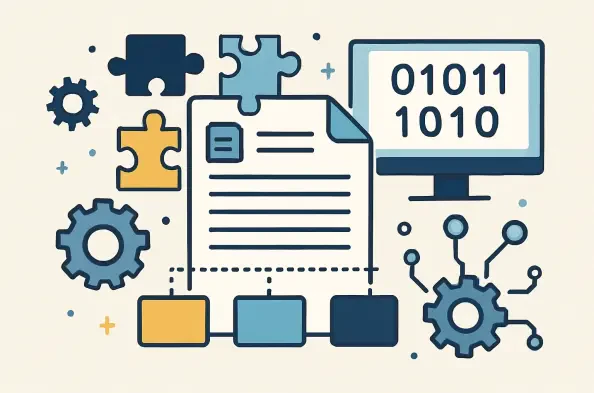Imagine a world where a single unnoticed flaw in a software component triggers a cascading failure across global supply chains, compromising critical infrastructure and exposing sensitive data to malicious actors. This isn’t a far-fetched scenario but a pressing reality in today’s interconnected digital landscape, where cyber threats grow more sophisticated by the day. Software Bills of Materials (SBOMs) have emerged as a vital tool to combat such risks, offering transparency into the building blocks of software and enabling organizations to identify vulnerabilities before they become catastrophic. This review delves into the transformative potential of SBOMs, exploring their core features, real-world impact, and the challenges that lie ahead in their widespread adoption.
Understanding the Foundation of SBOMs
At its core, an SBOM is a structured inventory that lists the components, libraries, and dependencies within a software product. Much like a nutritional label on food packaging, it provides a clear breakdown of what makes up the software, ensuring stakeholders can scrutinize every element for potential risks. This transparency is crucial in an era where software complexity has skyrocketed, often incorporating hundreds of third-party elements from diverse sources.
The rise of SBOMs aligns with the escalating need for robust cybersecurity measures. As cyberattacks target supply chain weaknesses with increasing precision, understanding the composition of software becomes a frontline defense mechanism. SBOMs empower organizations to map out dependencies and pinpoint vulnerabilities, fostering a proactive approach to risk management that was previously unattainable with opaque software ecosystems.
This technology’s relevance extends beyond individual companies to entire industries and governments, positioning it as a cornerstone of modern cybersecurity strategy. By shedding light on otherwise hidden elements, SBOMs facilitate informed decision-making, ensuring that security isn’t an afterthought but a foundational principle in software development and deployment.
Key Features and Structural Insights
Breaking Down the Elements
An SBOM’s primary strength lies in its detailed cataloging of software components, including identification data, version specifics, and dependency relationships. These elements collectively offer a comprehensive view of a software’s makeup, allowing for meticulous tracking of each part’s origin and potential security implications. Such granularity is essential for identifying outdated or vulnerable components that could serve as entry points for cyber threats.
Beyond mere documentation, these details play a pivotal role in vulnerability management. When a flaw is discovered in a widely used library, an SBOM enables rapid identification of affected software, drastically reducing response times. This capability transforms how organizations approach secure design, shifting the focus from reactive fixes to preventive measures built on clear visibility.
Roles in the Ecosystem
The effectiveness of SBOMs hinges on collaboration among diverse stakeholders, including software producers who create these inventories, end-users who rely on them for decision-making, operators who manage deployment, and national cybersecurity agencies that advocate for standardized practices. Each group brings a unique perspective, ensuring that SBOMs are not just technical documents but part of a broader security framework.
Producers bear the initial responsibility of generating accurate and detailed SBOMs, a task that requires integrating documentation into development workflows. Meanwhile, end-users and operators leverage this information to assess risks and maintain secure environments, often under guidance from agencies that push for harmonized adoption. This interconnected network underscores the collaborative spirit driving SBOM implementation across sectors.
Evolving Guidance and International Collaboration
Recent strides in SBOM adoption reflect a growing global consensus on their importance, highlighted by joint guidance released by the US and 14 allied nations. Titled as a shared vision for cybersecurity, this collaborative effort by multiple government agencies establishes a unified framework for defining and implementing SBOMs. It marks a significant step toward aligning international practices in response to shared cyber threats.
A key focus of this guidance is the push for harmonized technical standards to simplify integration and lower costs. Divergent approaches have historically posed barriers, but the emphasis on standardized practices aims to streamline processes for organizations operating across borders. This trend signals a collective commitment to making SBOMs a practical tool rather than a theoretical ideal.
Looking ahead, the guidance sets the stage for further advancements, with ongoing discussions around legislative alignment and common regulations. From now until 2027, expect increased momentum in refining these frameworks, ensuring that SBOMs evolve in tandem with emerging cybersecurity challenges. This international synergy is poised to redefine how software security is approached on a global scale.
Practical Impact Across Industries
SBOMs have found tangible applications in sectors ranging from technology to government and critical infrastructure, demonstrating their versatility as a security tool. In technology firms, they enable precise tracking of software components, ensuring that updates and patches are applied efficiently to mitigate risks. This granular control is invaluable in fast-paced environments where delays can be costly.
Government agencies, particularly those like the US Cybersecurity and Infrastructure Security Agency (CISA), have championed SBOM use to safeguard national systems. By mandating their adoption in procurement processes, these entities ensure that software entering critical networks meets stringent transparency standards. Such implementations serve as benchmarks for other sectors aiming to bolster their defenses.
In critical infrastructure, where downtime can have dire consequences, SBOMs facilitate rapid threat response by mapping out software dependencies. This capability allows operators to isolate and address vulnerabilities without disrupting essential services, a use case that underscores the real-world value of maintaining detailed software inventories in high-stakes settings.
Barriers to Widespread Adoption
Despite their promise, SBOMs face significant hurdles in achieving universal acceptance, with technical divergence being a primary concern. Varying formats and implementation methods across organizations create interoperability challenges, complicating efforts to integrate SBOMs into existing systems. This inconsistency often deters smaller entities with limited resources from adopting them.
Regulatory gaps further exacerbate the issue, as the absence of unified standards leaves room for ambiguity in compliance expectations. Without clear mandates, many organizations hesitate to invest in SBOM processes, fearing potential misalignment with future requirements. This uncertainty slows progress toward a cohesive cybersecurity landscape.
Operational complexities also pose obstacles, as embedding SBOMs into development and procurement workflows demands significant overhaul for many firms. Addressing these challenges requires concerted efforts from industry leaders and policymakers to streamline tools, provide clear guidelines, and foster an environment where adoption is both feasible and beneficial for all stakeholders.
Looking Ahead at SBOM Evolution
The trajectory of SBOMs points toward a future defined by greater standardization and technological integration. As global collaboration intensifies, the development of universal formats and protocols is likely to accelerate, reducing friction in cross-border operations. This evolution promises to make SBOMs more accessible, even to organizations with constrained budgets.
Anticipated innovations, such as automated generation tools and seamless integration with existing security platforms, are set to enhance usability. These advancements could transform SBOMs from static documents into dynamic assets that update in real-time, offering continuous insights into software health. Such breakthroughs would significantly elevate their role in proactive threat management.
Long-term, SBOMs are expected to become integral to cybersecurity resilience, shaping policies and practices around software supply chain security. Their influence may extend to legislative frameworks, embedding transparency as a non-negotiable principle in digital ecosystems. This enduring impact highlights their potential to redefine how security is prioritized in software lifecycles.
Final Reflections and Next Steps
Reflecting on the journey of SBOMs, their emergence as a pivotal cybersecurity tool stands out as a response to escalating digital threats. Their ability to illuminate the intricate layers of software composition provides a much-needed shield against supply chain vulnerabilities. Each stride, from international guidance to industry adoption, marks a significant leap in fortifying global defenses.
Moving forward, stakeholders must prioritize the development of standardized tools and clear regulatory pathways to overcome existing barriers. Collaborative platforms for sharing best practices could accelerate adoption, ensuring that even smaller entities benefit from SBOM insights. Investing in automation will also be crucial to simplify integration and maintenance.
Ultimately, the path ahead demands a unified push to embed SBOMs into the fabric of cybersecurity strategy. By fostering dialogue among developers, policymakers, and end-users, the tech community can address lingering challenges and unlock the full potential of this transformative technology. This collective effort will pave the way for a more secure digital future.






